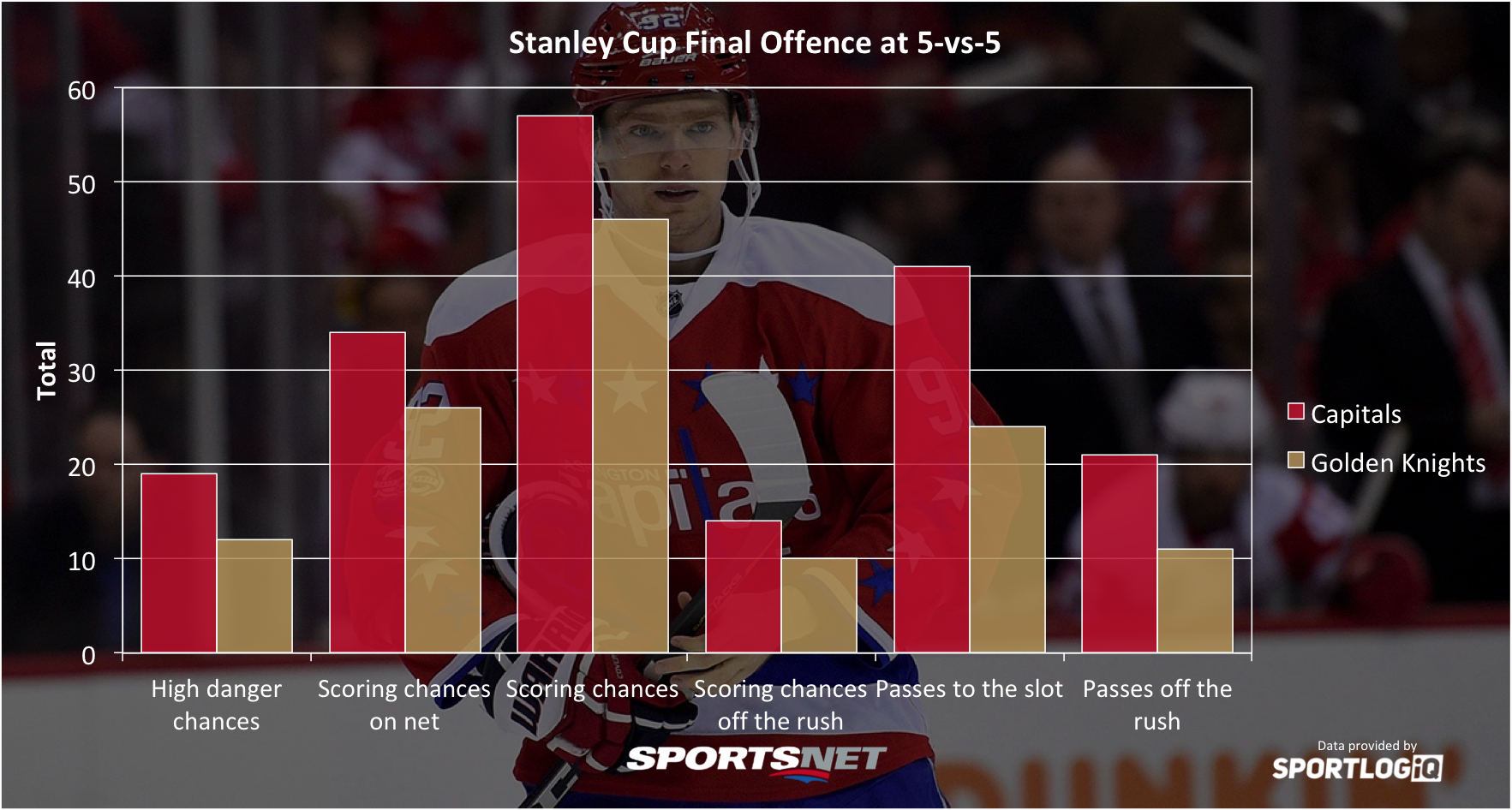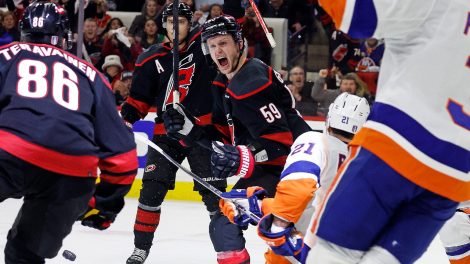Through three games in the Stanley Cup Final, the Washington Capitals have stolen home ice from the Golden Knights by splitting the games in Vegas to open the series, and then winning the first game in D.C. with a convincing performance.
Considering the fact that after three games, Vegas has recorded 53.2 per cent of the shots on net and 54.3 per cent of the shot attempts, you wouldn’t be out of bounds to suggest the Golden Knights have deserved better than to have lost two games in a row. However, those metrics miss some of the detail that’s made the Capitals so successful in this series.
When you break things down into plays that generate goals, the Capitals are ahead in all categories at 5-vs-5. The gaps in shooting are relatively small, partially due to score effects in the last two games, but let’s not take anything away from the Golden Knights, as they’ve pushed hard when trailing.
However, there is a big separation when we move to passing plays that generate goals, with the Capitals holding a huge advantage in passes to the slot and passes off the rush, though the reasons they’ve been able to accomplish both feats are very different.
When passing to the slot, the Capitals have attempted 82 passes while the Golden Knights have attempted 79. On average this season, teams have been able to connect on about 39 per cent of their passes to the slot, but the Capitals in this series have connected on 50 per cent, exposing the Golden Knights’ gaps in coverage on a consistent basis. Vegas has struggled to find those passing lanes, succeeding on just 30.4 per cent of their attempts passes into the slot.
The Capitals’ ability to close up passing lanes and intercept or at least get a stick on passes that make them harder to handle has loomed large in the defensive end, forcing a Golden Knights offence that has been highly dependent on puck movement to generate goals to shoot more often from static positions, making Braden Holtby’s job much easier.
[snippet id=3816507]
Off the rush, the Capitals and Golden Knights are both succeeding with their pass attempts over 60 per cent of the time, but while the Capitals have attempted 34 of those passes at 5-vs-5, the Golden Knights have attempted just 16, less than half as many.
This means the Golden Knights’ chances off the rush are coming more often in straight lines, while the Capitals are forcing Marc-Andre Fleury to move side to side while also accounting for the speed of the attack coming at him, further exacerbating the difficulty of the shots he’s faced in this series.
It should come as no surprise based on the eye test alone that the leaders in these two types of passes for the Capitals are Evgeny Kuznetsov and Lars Eller, two players who are brilliant in transition and gain the line more often than anyone else in these playoffs.
Kuznetsov is the most dangerous playmaker on the Capitals because of his ability to make plays at such high speed at high success rates, and when the player receiving his passes is often Alex Ovechkin, you can see why the Golden Knights may be in a bit of trouble.
If Vegas is going to come back in this series, they’re going to have to improve at both ends of the ice; they’ll need to tighten up the passing lanes they allow in their own zone and defend the blue line more effectively, and they’re going to need to work harder offensively to create the East-West puck movement both on the cycle and off the rush that has made the Golden Knights so successful all season long.
[relatedlinks]









